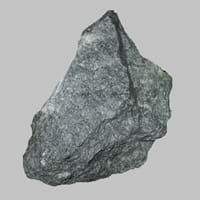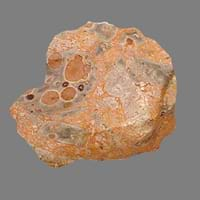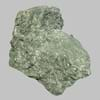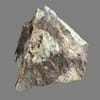Definition
It is a metamorphic magnesium rich rock because it is composed of the mineral talc
Felsite is a very fine grained volcanic rock that may or may not contain larger crystals and light colored rock that typically requires petrographic examination or chemical analysis for more precise definition
Discoverer
Unknown
Unknown
Etymology
From 17th century, because of its greasy feel and use like a soap
From English feldspar and -ite
Class
Metamorphic Rocks
Igneous Rocks
Sub-Class
Durable Rock, Soft Rock
Durable Rock, Medium Hardness Rock
Group
Not Applicable
Volcanic
Other Categories
Fine Grained Rock, Opaque Rock
Fine Grained Rock, Opaque Rock
Texture
Polished
Arborescent Patterned, Vitreous
Color
Black, Black to Grey, Green, Grey
Black, Blue, Brown, Green, Orange, Red, Tan, Yellow
Durability
Durable
Durable
Appearance
Dull, Banded and Foilated
Layered, Banded, Veined and Shiny
Interior Uses
Bathrooms, Decorative Aggregates, Homes, Interior Decoration
Decorative Aggregates, Flooring, Interior Decoration
Exterior Uses
As Facing Stone, Garden Decoration
Paving Stone, Garden Decoration
Other Architectural Uses
Curbing
Curbing
Construction Industry
Manufacture of Magnesium and Dolomite Refractories
Arrowheads, Cutting Tool, Knives, Scrapers, Spear Points
Medical Industry
Taken as a Supplement for Calcium or Magnesium
Surgery
Antiquity Uses
Artifacts, Jewellery, Monuments, Sculpture
Artifacts
Commercial Uses
Cemetery Markers, Creating Artwork, Gemstone, Jewelry, Manufacture of Soap, Solvents, Dyes, Plastics and Fibres, Production of Lime, Source of Magnesia (MgO)
Mirror, Jewelry
Types
Not Available
Not Available
Features
Host Rock for Lead
Available in Lots of Colors and Patterns, Clasts are smooth to touch, Splintery, Very fine grained rock
Archaeological Significance
Monuments
Used
Not Yet Used
Famous Monuments
Christ the Redeemer in Rio de Janeiro, Stonehenge in English county of Wiltshire
Not Applicable
Sculpture
Used
Not Yet Used
Famous Sculptures
Data Not Available
Not Applicable
Figurines
Used
Not Yet Used
Formation
Soapstone is a talc-schist, which is a type of metamorphic rock and it is largely composed of the mineral talc and is thus rich inmagnesium.
Felsite is a fine-grained, hard rock which is a type of metasomatite, essentially altered basalt. It forms with or without crystallization, either below the surface as intrusive rocks or on the surface as extrusive rocks.
Mineral Content
Albite, Apatite, Biotite, Calcite, Carbonate, Clay Minerals, Hornblende, Ilmenite, Micas, Plagioclase, Pyroxene, Quartz
Feldspar, Iron Oxides
Compound Content
CaO, Mg, MgO
Aluminium Oxide, CaO, Iron(III) Oxide, FeO, Potassium Oxide, MgO, MnO, Sodium Oxide, Phosphorus Pentoxide, Silicon Dioxide, Titanium Dioxide
Types of Metamorphism
Burial Metamorphism, Cataclastic Metamorphism, Contact Metamorphism, Hydrothermal Metamorphism, Impact Metamorphism, Regional Metamorphism
Burial Metamorphism, Contact Metamorphism, Impact Metamorphism, Regional Metamorphism
Types of Weathering
Not Applicable
Biological Weathering, Chemical Weathering, Mechanical Weathering
Types of Erosion
Not Applicable
Chemical Erosion, Glacier Erosion, Water Erosion
Grain Size
Fine Grained
Fine Grained
Fracture
Conchoidal
Conchoidal
Porosity
Less Porous
Very Less Porous
Cleavage
Perfect
Non-Existent
Toughness
1
Not Available
Specific Gravity
2.86
2.6-2.7
Transparency
Opaque
Translucent
Density
2.8-2.9 g/cm3
2.6 g/cm3
Resistance
Heat Resistant, Pressure Resistant
Heat Resistant, Impact Resistant
Deposits in Eastern Continents
Asia
China, India, Indonesia, Japan, North Korea, Russia, Saudi Arabia, Singapore, South Korea, Sri Lanka, Tajikistan, Thailand
Afghanistan, Indonesia, Japan, Russia
Africa
Egypt, Ethiopia, Ghana, South Africa, Western Africa
Kenya
Europe
Austria, England, Finland, France, Germany, Greece, Spain, Sweden, Switzerland, United Kingdom
Greece, Hungary, Iceland, Italy, Turkey
Others
Not Yet Found
Not Yet Found
Deposits in Western Continents
North America
Canada, USA
Canada, Mexico, USA
South America
Colombia
Argentina, Chile, Ecuador, Peru
Deposits in Oceania Continent
Australia
Central Australia, New Zealand, Queensland
New Zealand
Soapstone vs Felsite Characteristics
Though some rocks look identical, they have certain characteristics which distinguish them from others. Characteristics of rocks include texture, appearance, color, fracture, streak, hardness etc. Soapstone vs Felsite characteristics assist us to distinguish and recognize rocks. Also you can check about Properties of Soapstone and Properties of Felsite. Learn more about Soapstone vs Felsite in the next section. The interior uses of Soapstone include Bathrooms, Decorative aggregates, Homes and Interior decoration whereas the interior uses of Felsite include Decorative aggregates, Flooring and Interior decoration. Due to some exceptional properties of Soapstone and Felsite, they have various applications in construction industry. The uses of Soapstone in construction industry include Manufacture of magnesium and dolomite refractories and that of Felsite include Arrowheads, Cutting tool, Knives, Scrapers, Spear points.
More about Soapstone and Felsite
Here you can know more about Soapstone and Felsite. The life cycle of a rock consists of formation of rock, composition of rock and transformation of rock. The composition of Soapstone and Felsite consists of mineral content and compound content. The mineral content of Soapstone includes Albite, Apatite, Biotite, Calcite, Carbonate, Clay Minerals, Hornblende, Ilmenite, Micas, Plagioclase, Pyroxene, Quartz and mineral content of Felsite includes Feldspar, Iron Oxides. You can also check out the list of all Metamorphic Rocks. When we have to compare Soapstone vs Felsite, the texture, color and appearance plays an important role in determining the type of rock. Soapstone is available in black, black to grey, green, grey colors whereas, Felsite is available in black, blue, brown, green, orange, red, tan, yellow colors. Appearance of Soapstone is Dull, Banded and Foilated and that of Felsite is Layered, Banded, Veined and Shiny. Properties of rock is another aspect for Soapstone vs Felsite. The hardness of Soapstone is 1 and that of Felsite is 5-5.5. The types of Soapstone are Not Available whereas types of Felsite are Not Available. Streak of rock is the color of powder produced when it is dragged across an unweathered surface. The streak of Soapstone is black while that of Felsite is white. The specific heat capacity of Soapstone is 0.88 kJ/Kg K and that of Felsite is 0.92 kJ/Kg K. Depending on the properties like hardness, toughness, specific heat capacity, porosity etc., rocks are resistant to heat, wear, impact, etc.Soapstone is heat resistant, pressure resistant whereas Felsite is heat resistant, impact resistant.





